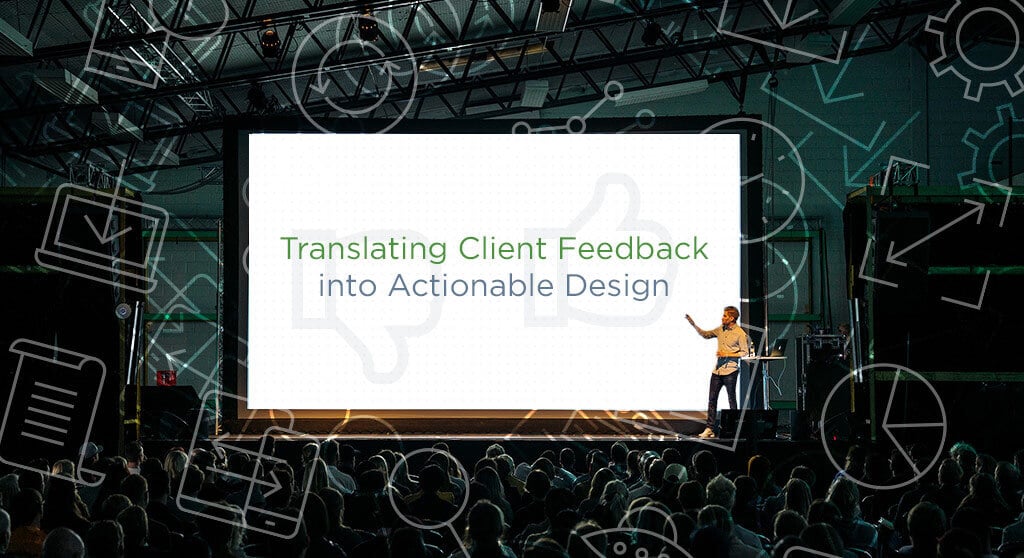Sometimes clients tell us things we don’t want to hear, but sometimes that means we need to be better listeners.
Taking feedback is an acquired skill, a skill that you can only learn by doing. A skill that takes years and years of experience, and is often hindered by our past experiences and upbringing. The same goes with giving feedback- it takes experience to know what words and phrases get through to people in a positive way, and our past experiences and upbringing plays a huge role in that. Most people have a hard time giving constructive feedback, and an even harder time taking it because we are trained to think of people pointing out our faults as a bad thing instead of an opportunity to improve.
When a client says… “Its not creative enough”, “Lets crisp it up”, etc
You say… “Do you have an example of what you’re looking for?” and go look through some similar sites with them to try and nail down the sort of elements they like.
They’re having trouble visualizing what they want, so their imagination is running wild and free. You need to rein it in and give it a concrete idea to attach itself to. The fastest way to do that is to go spelunking deep into the interwebs to find ideas and inspiration from other websites. It’ll save you innumerable rounds of revisions if you can use a different site as a jumping off point, something they look at and say “Hey, I like this!”
When a client says… “Do what you think is best”
You say… “Great! Who is our target audience and what action do we want them to take?”
This is both the holy grail, and a trap, all at the same time. Because if they tell you to do what you think is best, then you better have a damn good idea! So lets immediately reward their trust by asking clear, pointed, strategic questions. Because remember- this has nothing to do with what you want, and everything to do with what is objectively best for accomplishing their business goals. Define those goals, define the expectation for how your design will achieve them, and go be a rockstar.
When a client says… *silence* *crickets* *sirens in the distance*
The dreaded silence. Sometimes you unveil your work and are greeted by a blank stare and a nod. What do you do when there’s no input at all to respond to?
This is a red flag, but we can work with it, just know that communication may be an uphill battle.
Here are a few tips to ensure that you’re doing your best to head off any issues:
- Remind the client that if they don’t have any feedback that’s fine, but if they change their mind later it could incur additional fees
- Ask them what their favorite part of the design is- don’t ask them “if” they have a favorite aspect, but ask for a specific item
- Pull up a competitor’s site and show the ways in which yours is better (make sure yours is better!)
- If they have an existing site, show them the pain points that you’re resolving with the new design
They came to you because they knew they needed a (new) website, so they have feelings about it, but they may not be sure how to express them. The goal here is to try to find that passion and get them excited about how the new design is going to help them achieve their goals. Either they’ll agree that it’s going to be great, or they’ll disagree and then you have feedback to work from.
Always redirect towards concrete goals and feedback
That is rule #1- vague or meaningless feedback hurts both of you, but because your clients aren’t designers, they don’t have the vocabulary and experience to speak your language. It’s your job to help them articulate their feedback in the most concrete and productive way possible. When both of you understand eachother and have a common language with which to discuss the project everyone feels a lot more comfortable, communication improves, and you’re both on your way to a successful design!

